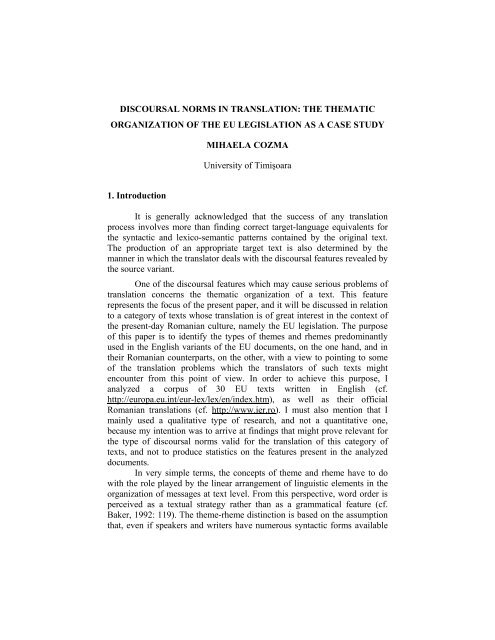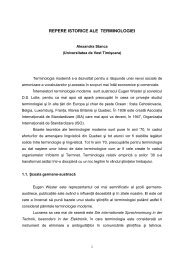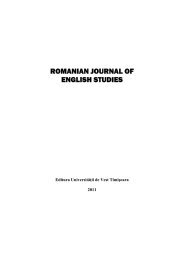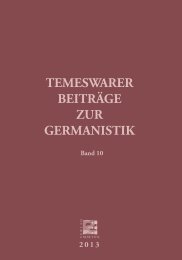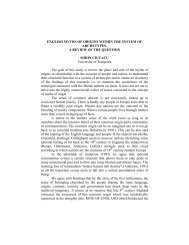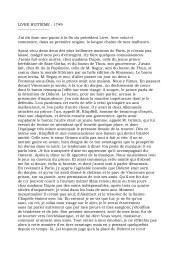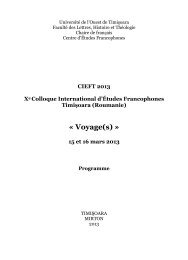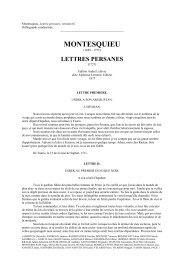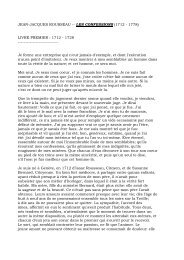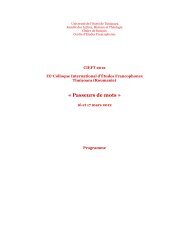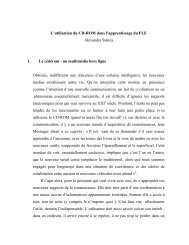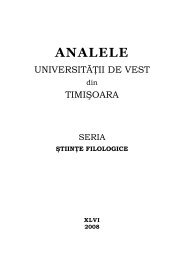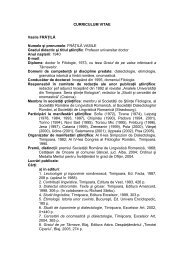TRANSLATION AND MEANING: A CULTURAL- COGNITIVE ...
TRANSLATION AND MEANING: A CULTURAL- COGNITIVE ...
TRANSLATION AND MEANING: A CULTURAL- COGNITIVE ...
You also want an ePaper? Increase the reach of your titles
YUMPU automatically turns print PDFs into web optimized ePapers that Google loves.
DISCOURSAL NORMS IN <strong>TRANSLATION</strong>: THE THEMATIC<br />
ORGANIZATION OF THE EU LEGISLATION AS A CASE STUDY<br />
1. Introduction<br />
MIHAELA COZMA<br />
University of Timişoara<br />
It is generally acknowledged that the success of any translation<br />
process involves more than finding correct target-language equivalents for<br />
the syntactic and lexico-semantic patterns contained by the original text.<br />
The production of an appropriate target text is also determined by the<br />
manner in which the translator deals with the discoursal features revealed by<br />
the source variant.<br />
One of the discoursal features which may cause serious problems of<br />
translation concerns the thematic organization of a text. This feature<br />
represents the focus of the present paper, and it will be discussed in relation<br />
to a category of texts whose translation is of great interest in the context of<br />
the present-day Romanian culture, namely the EU legislation. The purpose<br />
of this paper is to identify the types of themes and rhemes predominantly<br />
used in the English variants of the EU documents, on the one hand, and in<br />
their Romanian counterparts, on the other, with a view to pointing to some<br />
of the translation problems which the translators of such texts might<br />
encounter from this point of view. In order to achieve this purpose, I<br />
analyzed a corpus of 30 EU texts written in English (cf.<br />
http://europa.eu.int/eur-lex/lex/en/index.htm), as well as their official<br />
Romanian translations (cf. http://www.ier.ro). I must also mention that I<br />
mainly used a qualitative type of research, and not a quantitative one,<br />
because my intention was to arrive at findings that might prove relevant for<br />
the type of discoursal norms valid for the translation of this category of<br />
texts, and not to produce statistics on the features present in the analyzed<br />
documents.<br />
In very simple terms, the concepts of theme and rheme have to do<br />
with the role played by the linear arrangement of linguistic elements in the<br />
organization of messages at text level. From this perspective, word order is<br />
perceived as a textual strategy rather than as a grammatical feature (cf.<br />
Baker, 1992: 119). The theme-rheme distinction is based on the assumption<br />
that, even if speakers and writers have numerous syntactic forms available


